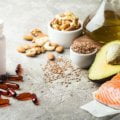“There is no longer regular in California,” says Kenny Belov, the proprietor of Two X Sea, a seafood eating place and wholesaler on San Francisco’s waterfront. He’s not speakme about the kingdom’s wildfires or housing fees—even though he honestly might be. Instead, he referred to California fish: “People will drop their tools within the water. However, there is no guarantee that they will carry something up.”
Regarding seafood harvested from the Pacific Ocean, what’s familiar won’t be sustainable, and what’s sustainable won’t have mass appeal. But thanks to a determined group of fishermen, purveyors, and foragers in California, that can be changing—it just might not be changing rapidly sufficiently.
Thanks to a human pastime, the water off California’s coast is warming. Last August, the surface of the seafloor off San Diego reached the highest temperature ever recorded. According to the United States Environmental Protection Agency, average seafloor temperatures on California’s Pacific coast rose to a degree and a half Fahrenheit at the start of the twentieth century.
Climate exchange has already pummeled an industry that reached $196 million in revenue in 2017, the maximum current year for which statistics are available. In 2015, a virus of toxic algae that may thrive in warming waters brought on the closure of most of the 12 months of Dungeness crab season. Climate trade is predicted to cause slight to extreme declines in salmon populations across California and the Pacific Northwest. The species’ habitat, just like the spiny lobster, has been pushed northward.
To make certain, now, not each indicator is terrible. In March, Christopher Free, a postdoctoral scholar at the University of California, Santa Barbara, became the lead writer on a Science paper that envisioned climate trade’s effect on fisheries. Although the worldwide most sustainable yield dropped 4.1% from 1930 to 2010, the decrease changed into now not calmly dispensed.
In the California Current, a Pacific Ocean contemporary shifting southward alongside the western coast of North America, Free tells me, “Fish populations haven’t been strongly impacted via warming. It’s likely the result of top control.” For every one of the species that Free and his coauthors analyzed—which included sardine, lingcod, and rockfish—the envisioned effect of warming in California was statistically indistinguishable from 0. But beyond successes do now not guarantee future ones. For Belov, the problem is simple to the kingdom and difficult to clear: “The matters we want are the ones we shouldn’t be consuming.”
What to Eat Next
“It’s depressing. What do Americans devour? The number one seafood consumed in North America is shrimp,” provides Kirk Lombard, a chum of Belov and the founder of Sea Forager, which gives coastal strolling tours and sells sustainable seafood. For Lombard, the maximum sustainable seafood to eat stays at the bottom of the food chain:” The gospel of small fishes,” he says.
It’s one component to understand that wild salmon or bluefin tuna isn’t the most sustainable choice. It’s quite any other to convince the customer to alternate them with surprising seafood like crimson urchins, which tend not to have the same role as their more commonly eaten cousins, or spiny lobsters, which lack the huge claws that American eaters prize.
Lombard proselytizes fishes like herring that are considered within the San Francisco Bay but now not consumed right here as they may be in cities like Amsterdam, wherein the Dutch snack on them like warm dogs. But unlike legally tolerated marijuana, that innovation hasn’t caught on within the United States. In 2017, the most current 12 months for which whole data is available.
put, $196 worth of herring became stuck commercially in California, and all of it was in Los Angeles when $14,884 worth of herring roe became harvested in San Francisco. Those are rounding mistakes in comparison to the state’s essential fish industries. By contrast, market squid landings totaled $68 million in revenue, Dungeness crab $47 million, Chinook salmon $4.8 million, and swordfish revenue totaled $3.Nine million, and bigeye tuna $three.5 million.












